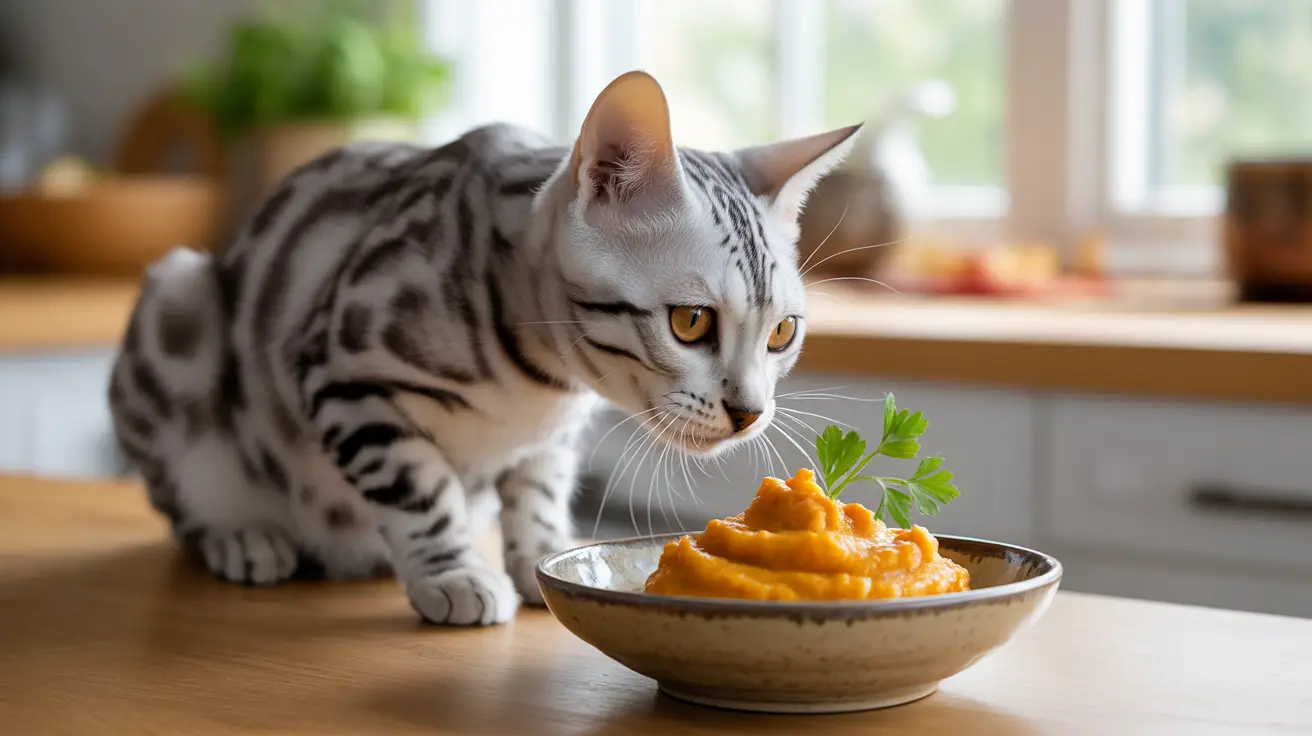The Safety of Squash for Cats
Most varieties of squash are safe for cats to consume, including butternut squash, acorn squash, zucchini, and pumpkin. However, it's crucial to understand that squash should only be served cooked and plain, without any seasonings or additives that could harm your cat.
The key to safely feeding squash to cats lies in proper preparation and moderation. Raw squash and squash skin can be difficult to digest and may pose choking hazards, so these should always be avoided.
Nutritional Benefits of Squash for Cats
While cats don't require vegetables in their diet, squash can offer several nutritional benefits when served as an occasional treat:
- High water content for additional hydration
- Dietary fiber for digestive health
- Low in calories and fat
- Rich in vitamins A, C, and E
- Contains minerals like potassium and magnesium
- Natural antioxidants
How to Prepare Squash for Your Cat
Follow these essential steps when preparing squash for your cat:
- Thoroughly wash the squash
- Remove all seeds and skin
- Cut into small, manageable pieces
- Cook by steaming, boiling, or baking until soft
- Mash or puree for easier consumption
- Serve plain without any seasonings or additives
Never add salt, butter, oil, or spices, as these can be harmful to your cat's digestive system.
Portion Size and Frequency
When it comes to serving squash to your cat, moderation is key. Start with small portions - about a teaspoon - and observe how your cat responds. The general rule is that treats, including squash, should not exceed 10% of your cat's daily caloric intake.
Monitor your cat for any signs of digestive upset, and adjust portions accordingly. Some cats may be more sensitive to new foods than others.
Frequently Asked Questions
Can cats safely eat different types of squash like zucchini or butternut squash?
Yes, cats can safely eat various types of squash, including zucchini, butternut squash, acorn squash, and pumpkin. All these varieties are safe when properly cooked and served plain without seasonings or additives.
How should I prepare squash to feed it safely to my cat?
Always cook squash thoroughly by steaming, boiling, or baking. Remove all seeds and skin, then mash or puree the flesh. Serve it plain without any seasonings, oils, or spices. Never feed raw squash to your cat.
What are the health benefits of feeding squash to cats in moderation?
Squash can provide dietary fiber for improved digestion, additional hydration, and various vitamins and minerals. It's also low in calories and can help with constipation and hairball management when fed appropriately.
How much squash can I give my cat without causing digestive issues?
Start with small portions of about 1-2 teaspoons and observe your cat's reaction. Treats, including squash, should not exceed 10% of your cat's daily caloric intake. Adjust portions based on your cat's size and tolerance.
Can squash help with my cat's constipation or hairball problems?
Yes, the fiber in squash, particularly pumpkin, can help alleviate mild constipation and assist with hairball management. However, consult your veterinarian if your cat has chronic digestive issues or hairball problems.
Conclusion
While squash can be a healthy addition to your cat's diet when properly prepared and served in moderation, remember that it should never replace their regular meat-based cat food. Always introduce new foods gradually and consult with your veterinarian if you have specific concerns about your cat's diet.
By following the guidelines outlined in this article, you can safely incorporate squash into your cat's treat rotation while maintaining their overall nutritional health.






